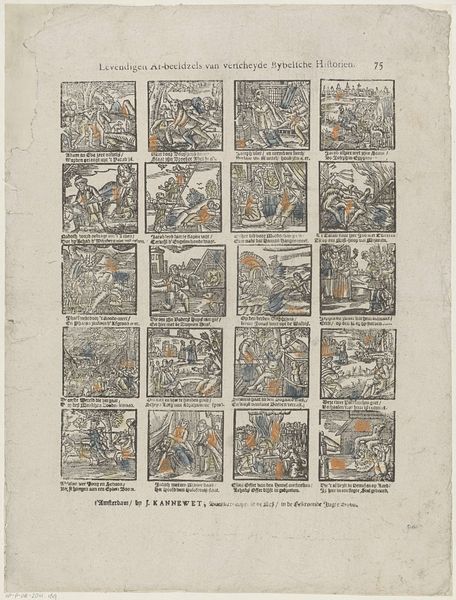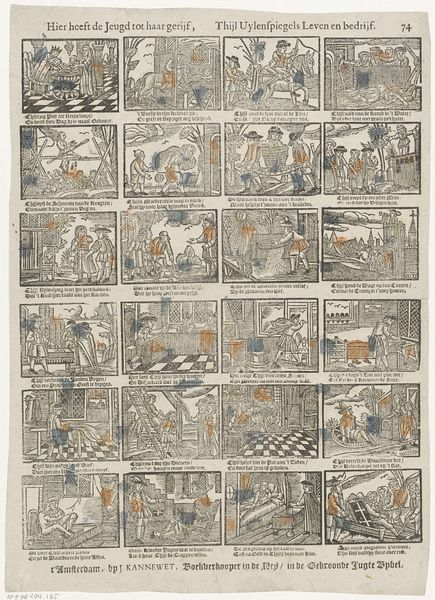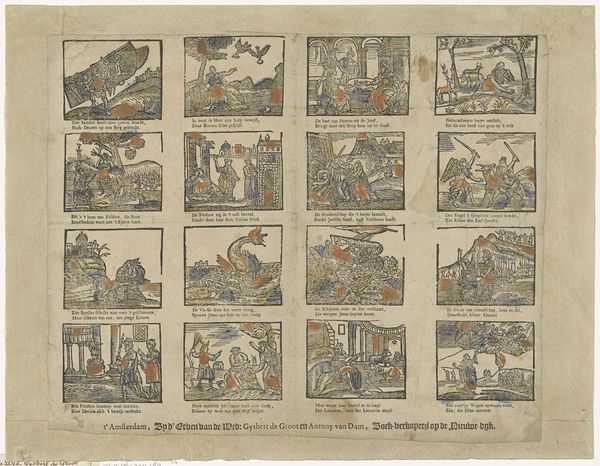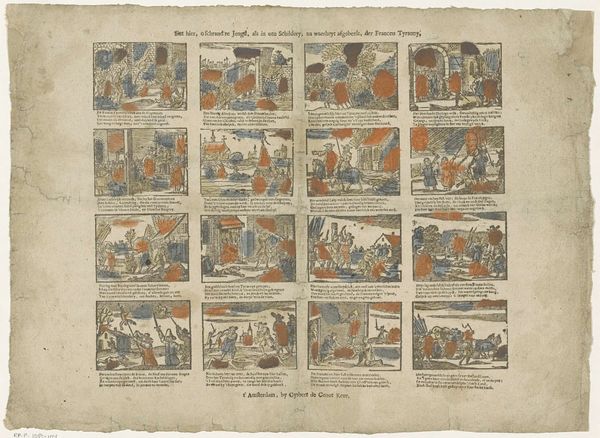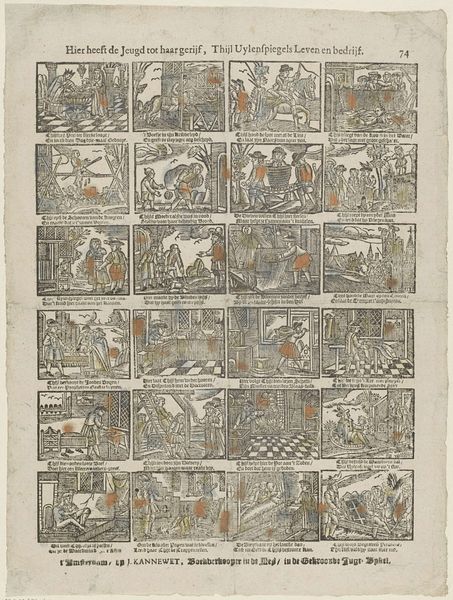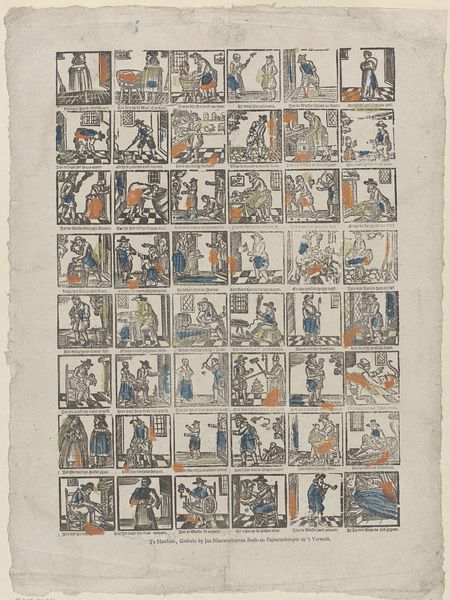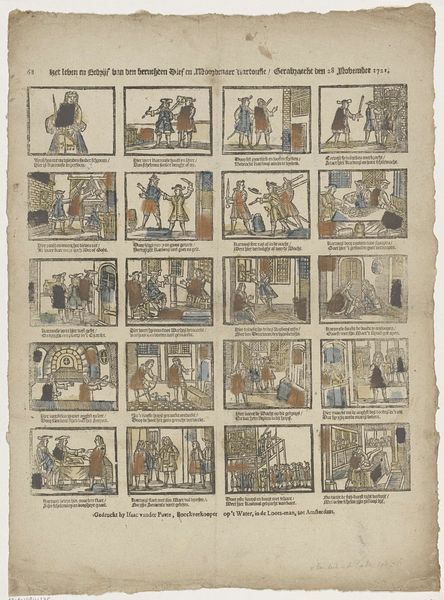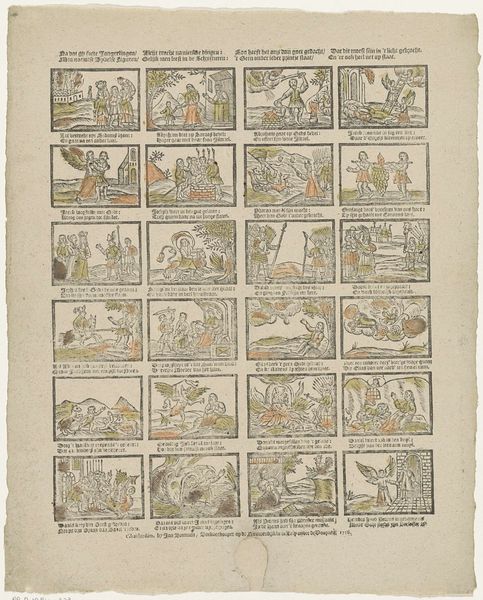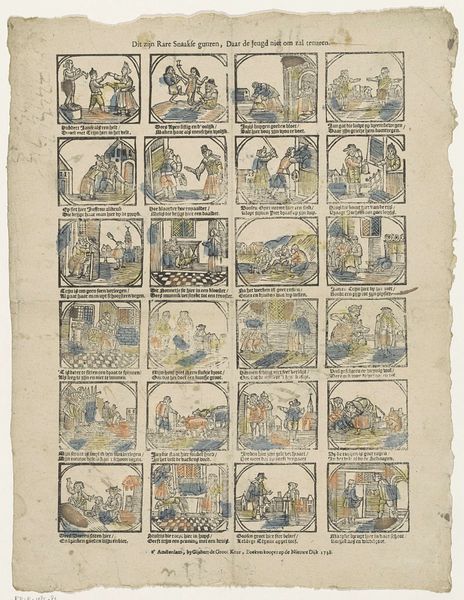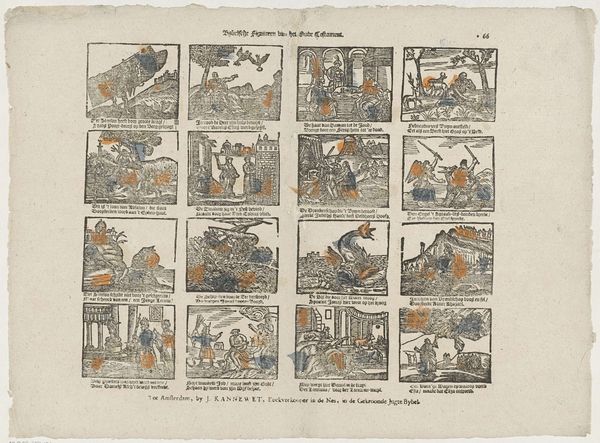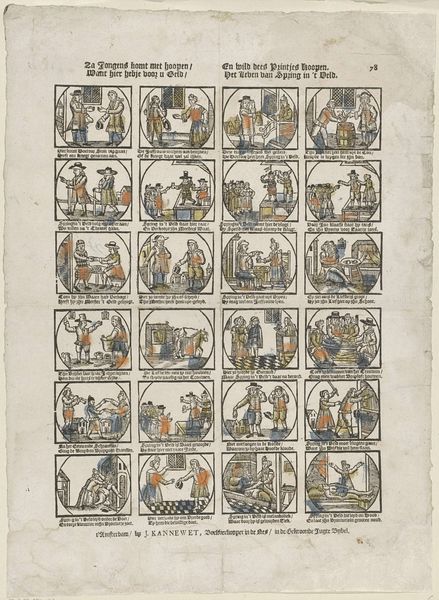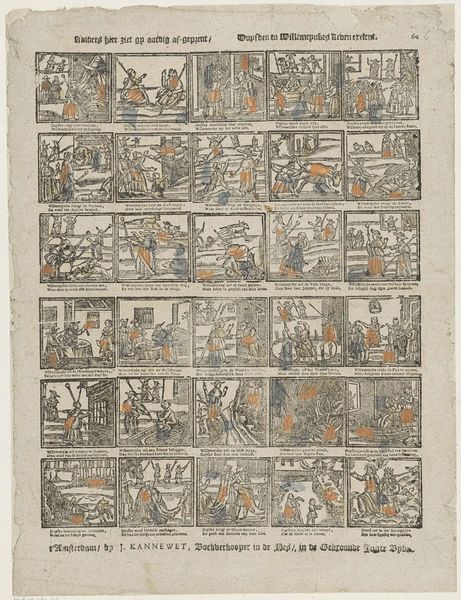
Esopus leert alle Dieren / Dat yder sal leven in goede manieren 1719 - 1724
0:00
0:00
Dimensions: height 402 mm, width 311 mm
Copyright: Rijks Museum: Open Domain
Curator: Well, what a find! This is "Esopus leert alle Dieren / Dat yder sal leven in goede manieren" – or, "Aesop Teaches All the Animals / That Each Shall Live in Good Manners" - made sometime between 1719 and 1724. It's an engraving, etching, and ink print on paper by the widow of Gijsbert de Groot. Editor: My first thought is... busy! It’s visually dense. So many little scenes, almost like a comic strip before its time. The palette is muted, almost faded, which gives it an antique storybook feel. Curator: Precisely! Each of these individual scenes illustrates a fable, drawing from the well-known collection attributed to Aesop. These fables were moral tales, very popular in Dutch Golden Age culture, providing instruction through entertainment. It speaks to the values of the time. Editor: Looking closely, the animals are so expressive! They almost look like they have human emotions, human anxieties. This visual technique taps into the archetypes within the stories. You can see familiar conflicts play out through the relationships of these various animals: The lion as a king figure or an eagle in flight suggests spiritual insight and guidance. Curator: Absolutely. Animals representing human traits… it’s a tradition stretching back millennia. And it isn't just about morals. Note how social hierarchies are mirrored in animal society here: these images provide insight into power structures as perceived by people in the 18th Century. The wolf represents cunning and greed… such archetypes appear consistently in folklore across Europe. Editor: The folk-art quality is something else, too. It clearly wasn’t aimed at the elite art circles but speaks directly to ordinary people, a sort of proto-pop-culture moment through easily-distributed prints. These aren't classical idealized figures; they reflect life more candidly, reflecting the viewers's own hopes and anxieties back at them. Curator: The widow de Groot definitely tapped into something powerful by blending established cultural touchstones like Aesop's fables with everyday visual accessibility through relatively affordable printmaking techniques, reflecting cultural continuity and adaptation. Editor: It really gives you a unique look at the relationship between animals, storytelling, and everyday moral codes of the early 18th century. Thanks for bringing that context to life.
Comments
No comments
Be the first to comment and join the conversation on the ultimate creative platform.
